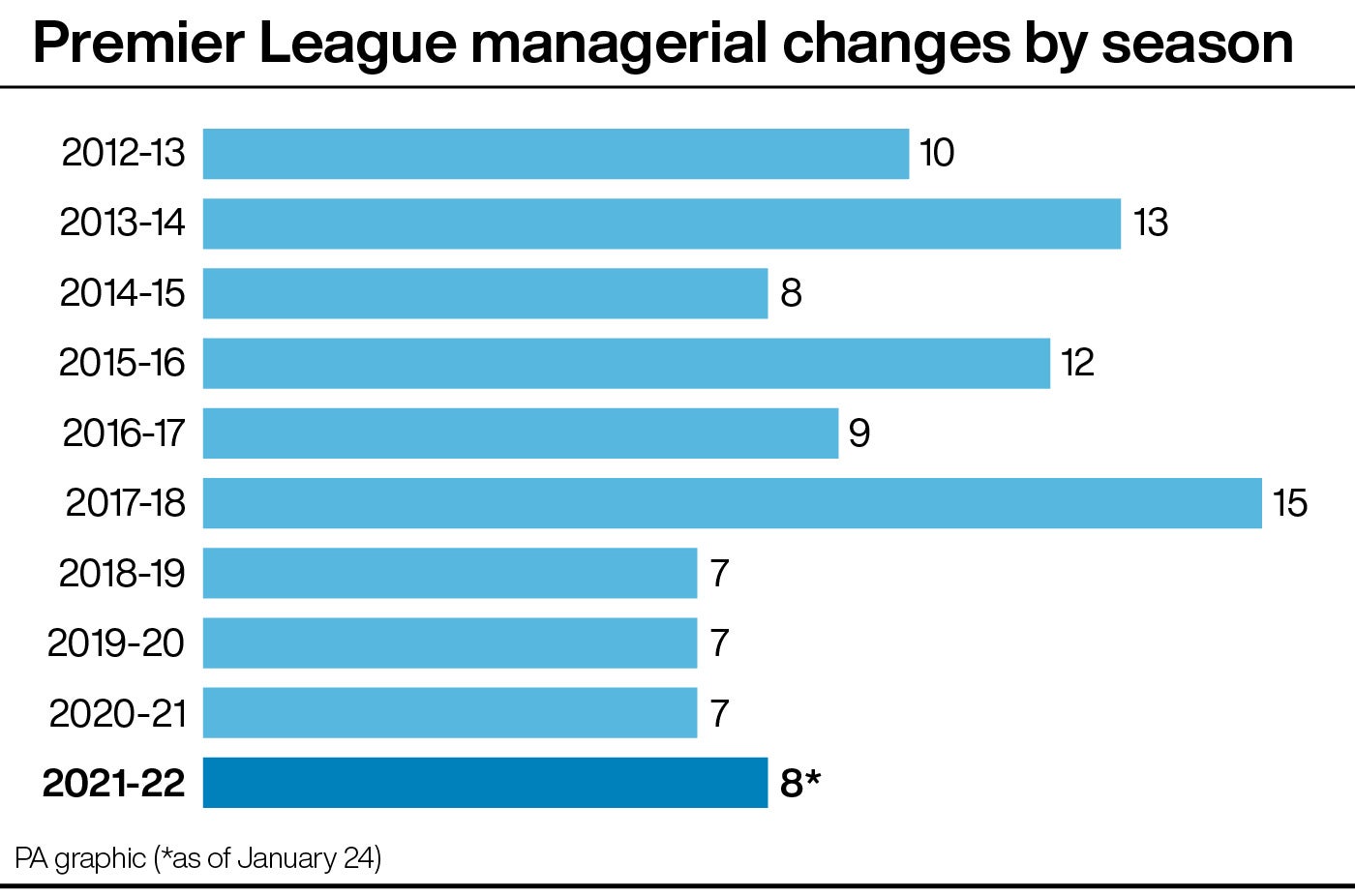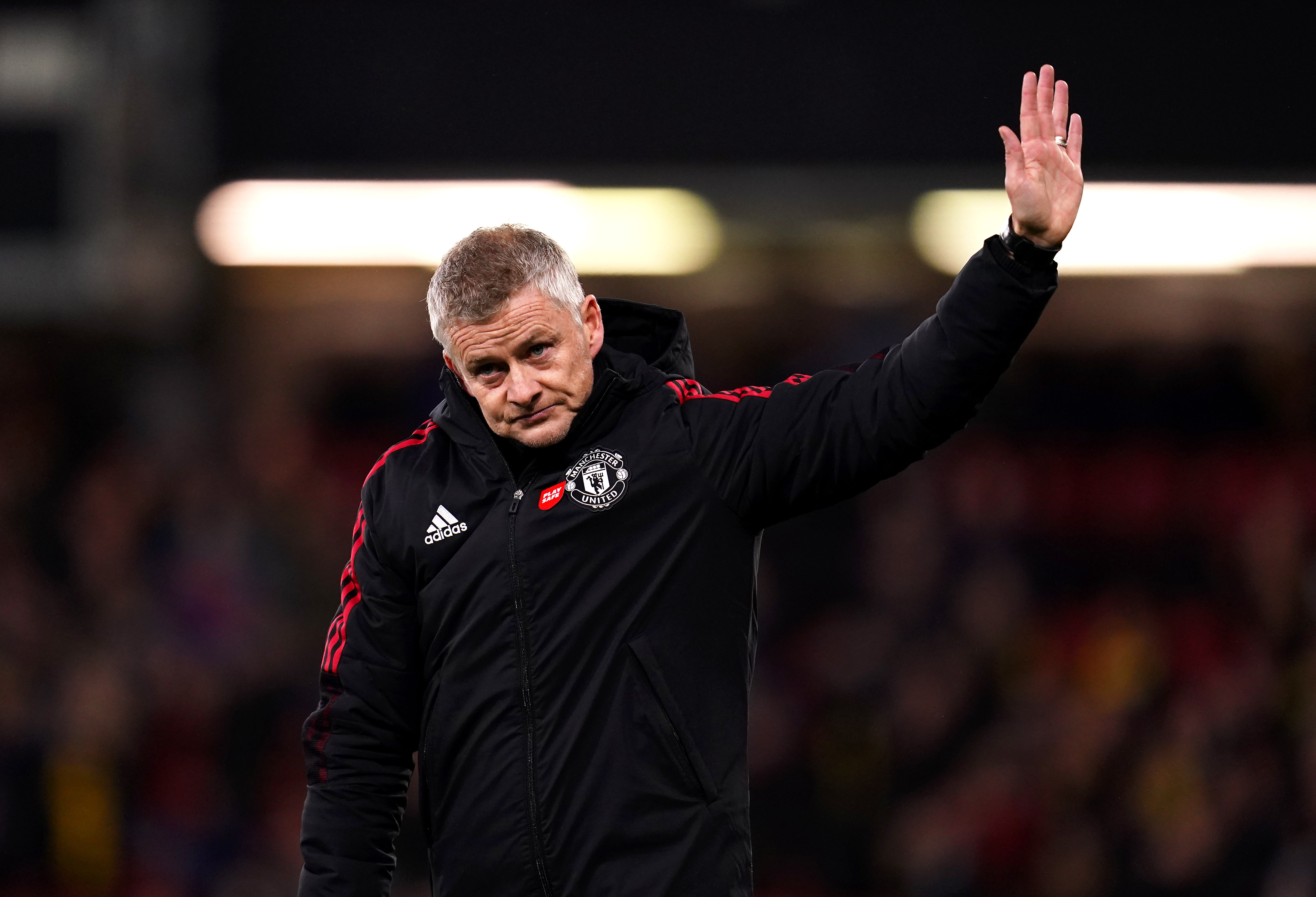Claudio Ranieri sacking takes 2021/22 Premier League season tally to eight
Defeat to Norwich ended the Italian’s Watford reign after just 14 matches in all competitions

Your support helps us to tell the story
From reproductive rights to climate change to Big Tech, The Independent is on the ground when the story is developing. Whether it's investigating the financials of Elon Musk's pro-Trump PAC or producing our latest documentary, 'The A Word', which shines a light on the American women fighting for reproductive rights, we know how important it is to parse out the facts from the messaging.
At such a critical moment in US history, we need reporters on the ground. Your donation allows us to keep sending journalists to speak to both sides of the story.
The Independent is trusted by Americans across the entire political spectrum. And unlike many other quality news outlets, we choose not to lock Americans out of our reporting and analysis with paywalls. We believe quality journalism should be available to everyone, paid for by those who can afford it.
Your support makes all the difference.The sacking of Claudio Ranieri takes this season’s number of Premier League managerial departures to its highest for four years, with four months still remaining.
Defeat to Norwich ended the Italian’s Watford reign after just 14 matches in all competitions as he followed Xisco Munoz to become the club’s second casualty of the campaign.
The last three full seasons have each seen exactly seven Premier League managers leave their posts and with the 2021-22 total already at eight, we look at how the numbers stack up.
Back on the merry-go-round

A period of relative calm in the top flight, partly stemming from the disrupted schedule as the Covid-19 pandemic hit, has given way to a flurry of firings this season.
Xisco left Watford and Newcastle’s new owners relieved Steve Bruce of his duties, both before October was out.
Nuno Espirito Santo lasted just four months at Tottenham and the departures of Daniel Farke and Dean Smith from Norwich and Aston Villa respectively meant a quarter of the league had changed coaches by November 7 – not since Jacques Santini’s resignation from Tottenham on November 5, 2004 has the fifth managerial change of a season happened earlier.
Manchester United’s Ole Gunnar Solskjaer quickly followed and though December proved uncharacteristically quiet, Rafael Benitez left Everton on January 16 to equal the tally from recent seasons before Ranieri made it eight.
Up to and including the 2007-08 season – which saw six changes by the end of November but, like 2004-05, only nine in total – the Premier League averaged 6.3 managerial changes per season with only 1994-95, the last year with 22 clubs, reaching double figures (11).
For the decade that followed, from 2008-09 to 2017-18, that average rose to 9.8 per season culminating in a record 15 in-season changes in the last of those seasons.
There were only seven in 2018-19, a number repeated in the following two seasons as the pandemic forced delays and rearrangement of football’s schedule and left clubs in limbo for prolonged periods, but that lull is firmly behind us.
Winter of discontent

November and December are traditionally the busiest months by far for mid-season managerial changes.
There have been 31 November departures in 30 Premier League seasons, with this term matching the record of four in 1994-95. Four of those have come at Spurs, with Nuno following Mauricio Pochettino two years ago, Santini in 2004 and Gerry Francis in 1997.
Only two other months can boast a higher casualty rate – May with 37 and December with 32, while no other month surpasses 20.
There are logical explanations for those totals, with May almost invariably marking the end of the season while the January transfer window unavoidably sharpens the focus of clubs considering a change prior to that point. Ranieri is the 20th January departure, matching the respective figures for February and March.
Join our commenting forum
Join thought-provoking conversations, follow other Independent readers and see their replies
Comments